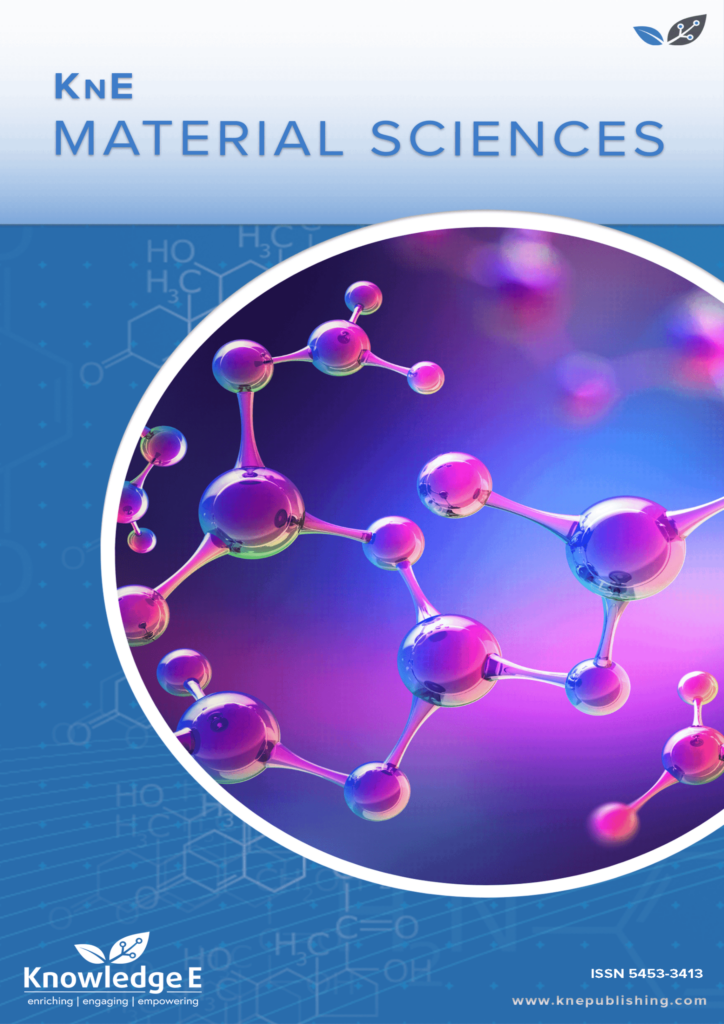
KnE Materials Science
ISSN: 2519-1438
The latest conference proceedings on physical materials, energy materials, electrical materials.
Features of Nickel-Cadmium Batteries Recycling
Published date: Sep 03 2017
Journal Title: KnE Materials Science
Issue title: Technogen-2017
Pages: 193-200
Authors:
Abstract:
The issue of operated-off alkaline nickel-cadmium batteries recycling is currently relevant due to a number of aspects: economic, environmental and social. It is most acute across the national corporation JSC Russian Railways. The article deals with some technological features of operated-off alkaline nickel-cadmium batteries recycling with valuable components being extracted (from the example of nickel-cadmium storage batteries of JSC ”RZD” rolling equipment). The results of leaching in Trilon B synthetic oxides solution, the presence of which is possible in the raw material being processed, are presented in the study. Based on the study of leaching processes of CdO, NiO, FeO, Femet and Fe2O3 in Trilon B solution, the dependence of complexing on the pH of the solution was revealed. The experimental site of the hydrometallurgical processing of the research center (OCGP IC) in the GMO KhMC PJSC ”Uralelectromed” was selected as the testing one for the technology proposed. As a raw material for the tests, a lot of negative lamellae packed in alkaline storage batteries of two different types were used. They were obtained as a result of preliminary drying and cutting at OOO Kursk factory ”Accumulator”. The particle size is 90% - 0.1 mm. The results obtained during the research allowed the author to formulate a hypothesis about the practical use of Trilon B for the processing of operated-off alkaline nickel-cadmium batteries with the extraction of valuable components having greater economic, environmental and social benefits compared to methods based on pyro metallurgy.
Keywords: nickel-cadmium batteries, recycling, Trilon B, Russian Railways, hydrometallurgical
References:
[1] R. J. Delisle, H. E. Martin, and A. Wilkerson, Pat. 5437705 US. Device and process for the recovery of cadmium and nickel, Everyday Battery Company, Inc., St. Louis, MO, EUA, 1995.
[2] A. B. Sab Nife, S. Landskrona, A. L. Melin, and V. H. Svensson, Pat. 4401463 US. Process for the recovery of metals from the scrap from nickel-cadmium electric storage batteries, 1983.
[3] A. Cox and D. J. Fray, “Recycling of cadmium from domestic sealed NiCd battery waste by use of chlorination Trans. Inst. Min. Metall,” Sect. C: Miner. Process. Extr. Metall, vol. 108, pp. 153–158, 1999.
[4] J. David, “Nickel-cadmium battery recycling evolution in Europe,” Journal of Power Sources, vol. 57, no. 1-2, pp. 71–73, 1995.
[5] K. Huang, J. Li, and Z. Xu, “Characterization and recycling of cadmium from waste nickel-cadmium batteries,” Waste Management, vol. 30, no. 11, pp. 2292–2298, 2010, School of Environmental Science and Engineering, Shanghai Jiao Tong University, PRC. 2010.
[6] N. M. Dyatlova, V. Ya. Temkina, and K. I. Popov, Complexons and Complexes of Metals M: Chemistry, 1988.
[7] S. V. Karelov, O. S. Anisimova, S. V. Mamyachenkov, and V. A. Sergeev, Tsv. metallurgy. 2008 No. 2. P. 20.
[8] J. Lewis and R. Wilkins, “Modern chemistry of coordination compounds, Pubetinlit,” 1963.
[9] F. Rossoti and H. Rosotti, “Determination of stability constants and other equilibrium constants in solutions,” p. 364, Mir, Moscow, 1965.